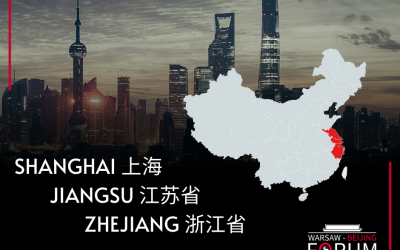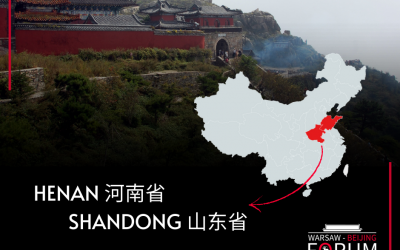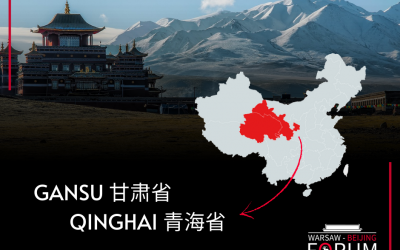Latest articles
Killing the chicken to scare the monkey: Sino-Australian relations
“For a glimpse of the future in a world dominated by China,
a good starting point is Australia”
Richard McGregor
The rapid changes in the geopolitical landscape in the Indo-Pacific region observed over the past decades have contributed to the growing strategic importance of Australia. Following the outbreak of World War II in the Pacific, the country for the first time became a pivotal part of the security architecture. Since the beginning of British settlement in 1788, Australia had anchored its security on a close alliance with the maritime hegemon. This role was held by the British Empire until the fall of Singapore in February 1942. In the aftermath of “the greatest military blunder in British history”, it was the United States who would become the guarantor of Australia’s security. The last September’s jubilee marking the 70th anniversary of the signing of the ANZUS pact and the recent announcement of AUKUS attest to the durability of this partnership.
The growing power of the People’s Republic of China (PRC) presents Australia with several strategic dilemmas. The shifting balance of power means that, given its dependence on both superpowers, Australia could find itself in the middle of a rivalry that is likely to define the present century. The primary areas of struggle for influence are likely to be the Western Pacific, as well as the increasingly important Indian Ocean. Broad and uncontested access to key bodies of water combined with the continent’s strategic depth makes a military alliance with Australia an invaluable asset, as evidenced by the course of World War II in the Pacific.
An analysis of the relationship between the PRC and Australia will establish patterns of Beijing’s behaviour toward countries in the region and, through numerous examples, present the shift in China’s foreign policy of the Xi Jinping era.
Historical background of relations between Australia and the PRC
Relations of Australia and the Middle Kingdom originated in the movement of people. In the mid-19th century, some 40,000 Chinese, attracted by the gold rush ventured south. Today, as over 150 years ago, the relationship between the two countries is still largely based on natural resources and migration. The history of ties between the states in the 20th century consists of many events that can easily be considered as turning points. After the outbreak of Sino-Japanese War in 1937, Canberra continued to trade with the Empire of Japan, thus indirectly contributing to actions against the Chinese. The strategic landscape changed dramatically on the 7th of December 1941 with the entry of the United States into World War II. Australia, along with its ally sided with China. After 1949’s proclamation of the PRC, a shared priority of American allies was indisputable, and the end goal became to counter communist’s influence to forestall the so called “domino effect”. The major breakthrough in the Sino-Australian affairs came with the establishment of diplomatic relations, which occurred in 1972. Australia decided on the move mainly due to similar sentiment coming from Nixon’s administration in the US. After a period of reform and opening initiated in the late 1970s, Australia was to become one of the biggest beneficiaries of the transformation that had enabled China’s unprecedented 40-fold growth, over the previous 4 decades. The economic dependence created in the early years of the 21st century was one of the main reasons why Australia was able to avoid recession for almost 3 decades, something no other developed economy has managed to do so far. Furthermore, Beijing’s stimulative actions in response to the financial crisis of 2007-2009 provided Australia with a shield against the effects of economic collapse experienced by Western European countries and the United States.
The visit of Chinese Communist Party (CCP) leader Xi Jinping in 2014 marked a high point in relations between Beijing and Canberra. The prevailing optimism at the time is reflected in statements by then Prime Minister Tony Abbott who commended Chinese leaders for their successful reforms. Xi Jinping laid the foundation for further cooperation during his speech to parliament in Canberra, when he assured of an “endless ocean of goodwill” between the two states. A 2014 Lowy Institute poll found that China was the best-perceived country in Asia at the time in the eyes of Australians, even surpassing Japan. Rhetoric soon turned into action. The partnership was cemented with the signing of the China-Australia Free Trade Agreement (CHaFTA), which entered into force in 2015.
Malcolm Turnbull’s assertive turn
Any hopes of expanding cooperation to other areas were dashed following a turn in Australian policy that proved to be at odds with CCP’s interests. The event that started the downward spiral was the Malcolm Turnbull administration’s introduction of “Foreign Interference Laws” (FIL). The purpose of the legislation was to limit foreign interference in the political sphere. The set of regulations was adopted after a high-profile 2017 affair involving Chinese businessman Huang Xiangmo and Australian Labor Party senator Sam Dastayri. The most important effect of the affair was the introduction of the problem of foreign interference into the public debate, which increased pressure on those in power. It is worth noting that public awareness of this issue has been growing steadily in recent years. Lowy Institute research indicates that in 2020, 82% of respondents expressed concern about the influence of Chinese actors in the political sphere, an increase of 19 percentage points over 2 years. In announcing the new law, M. Turnbull, paraphrasing Mao Zedong’s 1949 speech, announced that “Australians will rise from their knees”. The statement dispelled illusions about the motives for the introduction of FIL, thus constituting a watershed in relations with the PRC. Given the fact that M. Turnbull in his statements warned, among other things, of the risk of “Finlandization” of Australia by the PRC, it should not be surprising that it was during his tenure that there was an increase in assertiveness in relations with Beijing.
The impact of PLA’s growing military capabilities on relations with Australia
Changing perception of the Chinese foreign policy is also influenced by the on-going modernization of its armed forces, particularly regarding its growing capability to project power near the coasts of Australia. According to the government, the transformation of the PLAN into a blue water navy is to be completed by 2050. Advanced work on the new aircraft carrier “Type 003” and a focus on nuclear-powered submarines would seem to validate these statements. Australian strategists are also concerned about China’s hypersonic missile development program and the air force’s expansion of its long-range H-6N bombers. Due to the presence of military installations in the South China Sea in the vicinity of Mischief Reef, the Australian mainland has also come within range of DF-26 ballistic missiles. The potential of China’s shipbuilding industry indicates that time is playing to the disadvantage of US allies. Between 2016 and 2020, the Chinese launched 80 ships, compared to 36 US Navy vessels. As the relative military capability of the Middle Kingdom against the United States expands, the role of countries like Australia will assume greater importance. In a report by the Lowy Institute, analysts estimate that over the next 2 decades, the Chinese could edge out the Americans out of the entire theatre of operations, thus achieving dominance in the Indo-Pacific. In their view, the ongoing expansion of the Chinese navy is the largest such undertaking since the “600-ship campaign” initiated by the Ronald Reagan administration.
Growing in numbers: Chinese diaspora in Australia
The Chinese diaspora, which currently numbers over 1.2 million people, exerts a profound influence on relations between both countries. A potential danger in this context is the increased activity of the United Front, which is effectively widening social divisions. Comprised of both loyalists and opportunists, the organization answers to the CCP Central Committee. Its goal is to influence the Chinese diaspora and promote a political narrative in line with directives from Beijing.. The strong ties are also underscored by Xi Jinping’s belief that identity and loyalty are determined by ethnicity and race rather than citizenship. In his speeches, the CCP leader has frequently referred to members of the diaspora as ‘China’s sons and daughters’. The scale of this phenomenon is well illustrated by the fact that in Australia’s eight most renowned universities, one in ten students is from China. In recent years, the education sector has become one of the biggest beneficiaries of the influx of wealthy Asian immigrants. In 2018, revenue from higher education was AUD 40 billion making it the most important Australian export after coal and iron ore sales.
Road ahead
With political consensus in Canberra and both Labor and Liberal parties staunchly opposed towards Beijing’s coercive actions, it is likely that Australians will continue to hold their ground. Successful moves to diversify exports have proven that PRC despite remaining the largest trading partner has not achieved its main goal. The aim was certainly not merely to gain concessions from Canberra but rather to make Australia an example to the wider region. Chinese officials ultimately decided on killing the chicken to scare the monkey which so far has proven to be an ill-conceived and largely counterintuitive approach. A more sound and mutually beneficial strategy from Beijing’s perspective would be to leave ideological differences aside, instead focusing on furthering economic cooperation with Canberra. Marked shift from the self-defeating “wolf-warrior” playbook could improve its already strained image in the region and solidify its status as an economic powerhouse in the Indo-Pacific.
Author:
Jakub Knopp
Dlaczego warto studiować w Chinach? – Studiuj w Chinach z Asianship
Nie da się ukryć, że Chiny stanowią w ostatnich latach coraz atrakcyjniejszy cel zarówno dla absolwentów szkół średnich, jak i udających się na studia II stopnia. Chiny są światowym liderem pod względem wydatków na edukację wyższą, a oferowanym programom towarzyszą perspektywy przyszłego zatrudnienia w największym na świecie sektorze e-commerce oraz wstąpienia na prężnie rozwijającą się w Państwie Środka scenę startupową.
read moreWBF & Tisco: Znaki towarowe w Chinach
Znaki towarowe w Chinach – wymogi, postać znaku towarowego W poprzednim artykule zdefiniowaliśmy znak towarowy i określiliśmy zalety wynikające z jego rejestracji, szczególnie w Państwie Środka. Aby jednak skutecznie zarejestrować znak towarowy w Chinach,...
read moreStudia w Chinach (WBF & Asianship)
Edukacja wyższa w Chinach – Studiuj w Chinach z Asianship
Edukacja wyższa w Chinach szczyci się niezwykle długą, bo aż dwutysiącletnią historią. Od czasów dynastii Sui do 1905 roku, a zatem niemal do końca okresu cesarskiego, funkcjonowało tam szkolnictwo wyższe zarezerwowane dla arystokracji. Ówczesna Akademia Cesarska, po...
read moreDlaczego warto studiować w Chinach? – Studiuj w Chinach z Asianship
Nie da się ukryć, że Chiny stanowią w ostatnich latach coraz atrakcyjniejszy cel zarówno dla absolwentów szkół średnich, jak i udających się na studia II stopnia. Chiny są światowym liderem pod względem wydatków na edukację wyższą, a oferowanym programom towarzyszą perspektywy przyszłego zatrudnienia w największym na świecie sektorze e-commerce oraz wstąpienia na prężnie rozwijającą się w Państwie Środka scenę startupową.
read moreDiscover China
Map of CHina: Shanghai, Jiangsu, Zhejiang
The provinces of Jiangsu and Zhejiang, and the city of Shanghai are bordered by the East China Sea to the east in the central-eastern part of the country. All of them are located in a subtropical monsoon marine climate zone which makes the summers very humid and hot....
read moreMap of China: Shandong, Henan
Shandong 山东 Shandong is a province on the east coast of China, on the Yellow Sea. With a population of around 98 million, it is the second largest province in China, second only to neighboring Henan. The capital city is Jinan. The historical name of the province, Lu,...
read moreMap of China: Qinghai, Gansu
Qinghai 青海 On the Rooftop of the World. Qinghai is a relatively recent and sparsely populated northwestern province of China. The province derives its name, meaning “blue sea”, from its huge inland lake. Qinghai Lake (known as Koko Nor). is the largest saltwater lake...
read moreZnaki towarowe w Chinach (WBF & Tisco)
Warsaw-Beijing Forum’s new Partner – TISCO import
We are pleased to announce Warsaw-Beijing Forum’s new Partner - TISCO import ! TISCO specialises in supporting and protecting entrepreneurs in the field of goods import from the People's Republic of China. Services offered by TISCO include mainly extended business...
read moreWBF & Tisco: Zmiany w chińskim prawie a znaki towarowe
Zmiany w chińskim prawie a znaki towarowe Czy zmiany w chińskim prawie w 2021 mają wpływ na regulacje dotyczące znaków towarowych? Prawo patentowe – Zhōnghuá rénmín gònghéguó zhuānlì fǎ (中华人民共和国专利法) 17 października 2020 roku została ogłoszona nowelizacja przepisów...
read moreWBF & Tisco: Rejestracja znaku towarowego w Chinach
Procedura rejestracji znaku towarowego w Chinach W Chinach istnieje możliwość rejestracji znaku towarowego na okres 10 lat, w dwóch systemach opartych na nicejskiej klasyfikacji towarów – krajowym i międzynarodowym. Jeśli chodzi o ten drugi, proces jest nieco dłuższy...
read moreEnergy for Future Earth
Energy sources: Wind
The Chinese renewable energy sector is rapidly growing, not only thanks to its solar capacity. Over the past decade, China has become the world leader in wind energy with the largest installed capacity, both on land and sea. As the vast majority of Chinese energy...
read moreEnergy sources: Solar energy
China is the world leader in developing renewable energy solutions, including solar energy. They produce far more energy from solar panels than any other country in the world, they are also the leader when it comes to capacity. In 2019, China had 204,7 GW cumulative...
read moreEnergy sources: Gas
At the end of the 20th century, the most crucial gas production area was the Sichuan Basin. In 2003, the main problem of gas was competing with cheap coal and creating demand for it, but as early as in 2005, China had to raise the gas price to control its supply. In...
read moreBusiness Culture in China
The role of guanxi
Guanxi (關係 / 关系), which is about personal relationships in Chinese business Traditional values in human relations are still maintained in Chinese society, which manifest themselves in the form of unwritten principles such as trust and mutual support. Guanxi is...
read moreAn introduction to business culture in China
China’s history and rich culture influence is vividly present in the practices of business relations. Creating successful Sino-foreign business partnerships often requires a better understanding of Chinese cultural codes. Confucianism continues to determine crucial...
read more
CONTACT US
BEIJING
Professor Zhang Li
Project Academic Supervisor
Mail: zhangli8410@sina.com
Su Hanting
Shu Ni
Lan Tianze
Beijing Team Coordinators
Mail: wbfpress@163.com














